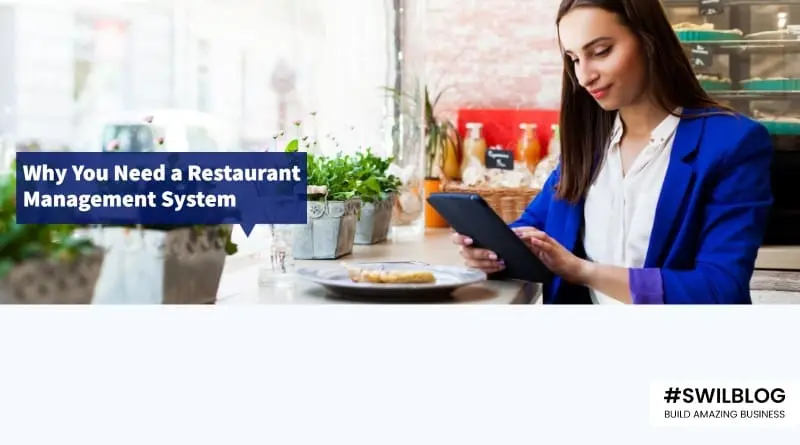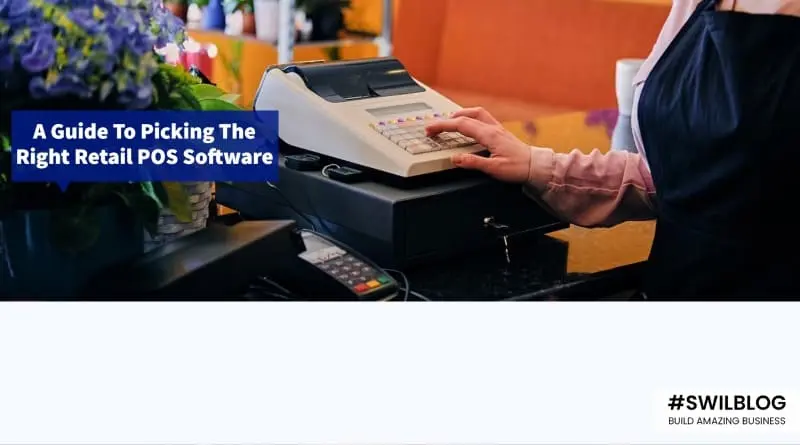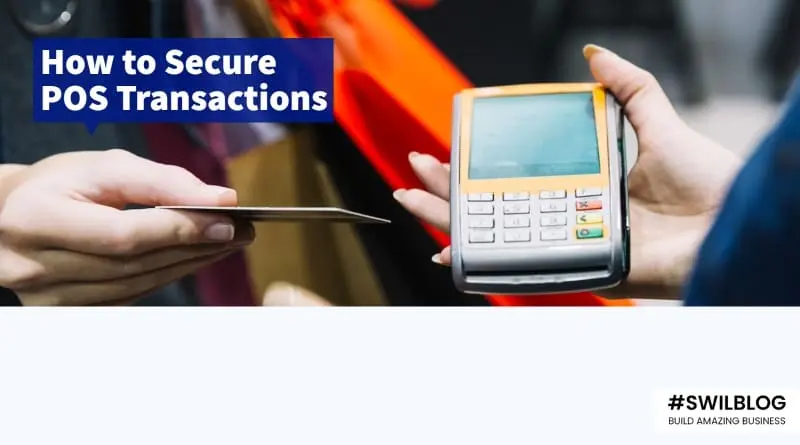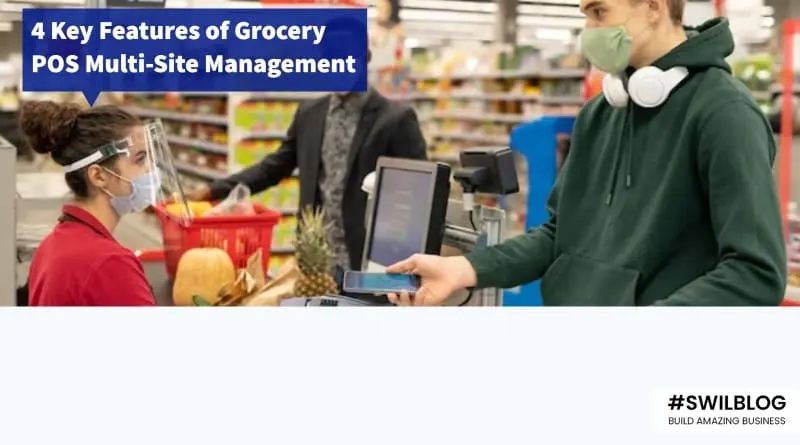Restaurant technology has come a long way in terms of technology. There are various tools available in the market that meet the needs of restaurateurs. Mostly, these tools are integrated with each other for efficient communication. Restaurant operators can find all they need to run their businesses on an All- in- One Restaurant Management System.
A Restaurant Management System is well-equipped with various functions. These include POS systems, online ordering systems, discounts & offers, marketing, reservations, and much more. These tools work together and help increase your business sales. They deliver an exceptional customer experience and also save time and effort.
In this complete All- in- One Restaurant Management System guide, you will learn all about this technology and how it will benefit your business.
Article Content-
- All about Restaurant Management System
- Features of a Restaurant Management System (RMS)
- Benefits of using a Restaurant Management System (RMS)
- How SWIL Restaurant Software helps improve restaurant sales?
- Wrapping Up
All about Restaurant Management System
Restaurant Management System (RMS) is a type of Point of Sale (POS) system which can efficiently handle customer transactions. It handles several other functions of a restaurant business. This includes restaurant admin work, online ordering, discounts & offers, inventory management, loyalty programs, etc. These features work effortlessly with both RMS and POS.
A POS mainly performs transaction- related functions. These include checkout, bill management, order processing, menu management and analytics. However, an RMS works along with POS by integrating itself seamlessly. It basically expands the functionality of a POS. An RMS performs additional functions such as managing gift cards, taking reservations, managing guest details, etc.
Features of Restaurant Management System (RMS)
RMS technologies have become an indispensable part of the restaurant business today. An RMS automates operations, increases efficiency and customer experience. Below is a list of essential features of a Restaurant Management System (RMS):
1. Point of Sale (POS)
A POS system handles essential transactional business functions. It helps you process business sales, manage your business floor plan, menu and order management, staff and roster management. It also helps you gather essential data and generate analytics reports. These reports help you get business insights and much more. A POS is the backbone of your RMS that connects all your data. It helps accelerate your business decisions.
2. Online order management
An online order management system enables your business to place orders and process payments for home delivery and takeaway orders. This is done via the restaurant website or third- party ordering platforms. With the help of an RMS, orders will get redirected directly from your website or third- party platforms to your POS. This enables you to minimize risks of errors. It also helps you save time and money as you don’t need to handle multiple devices or screens to track orders. Your customers can pay online for their orders and also redeem reward points for the same.
3. Reservations management
An RMS allows guests to book tables directly on your restaurant website or any third- party platforms. The reservations portal on your website integrates with your RMS, which keeps everything in sync in one place. You can directly use your RMS instead of going back and forth on your website. All your team members can be in sync of the operations going on in the restaurant. You can manage the customer experience and communication in a quick and efficient manner.
4. Customer management
An RMS is integrated with a Customer Relationship Management (CRM) which helps to heighten sales and customer delight. A CRM stores all customer details such as contact details, personal details such as birthdays and anniversaries, past order history, choice of food, platforms used for ordering food, preferred payment modes, etc. A good CRM also helps with marketing efforts such as SMS marketing, WhatsApp and email marketing. When CRM is linked with POS, you can generate insights and analytical reports. These include, best selling dishes, least selling dishes, peak business hours or the day or week. You can generate offers and deals which will attract customers to come back to your restaurant. CRM is one technology that must be followed by all food outlets regardless of their size.
5. Cloud- based technology
A cloud- based POS technology integrates everything in one place. This includes online order management, payments, reservations and CRM. Due to this, you don’t need to separately use expensive tools for managing all these functions. A cloud- based RMS technology includes all of these. A cloud- based technology offers advanced features such as reporting, accounting, inventory management, menu management, SMS reminders, reviews and feedback management. You can automate and control your entire restaurant operations.
6. Inventory management
The inventory management feature of an RMS helps you keep track of your food stock and resources. Other physical items such as napkins and silverware can be recorded and tracked in an RMS. You get automatic alerts when your supplies are running low. It ensures you make informed decisions on your inventory situation.
7. Payroll management
This feature ensures you credit your employee’s salary on time every month. You can credit the funds directly into their bank accounts. You can also determine taxes and deductions. You can automate your payroll process as much as possible in the RMS. It can save you ample time and keep all your records secured.
8. Data reporting
An RMS software data and metric analytics feature enables good restaurants to become smart restaurants. You can monitor your restaurant metrics and identify loopholes in your workflow. This data helps you point out solutions and strategies for improvement. You can customize and access this data from anywhere
9. Real- time access
An MS technology gives you active and real- time access so you can keep a check on your business from time- to- time. You can keep track of your ongoing orders. Also you can get an active report of your inventory and stock situation. Due to real time data, stock- out situations can be avoided as you get active alerts of low inventory.
10. Discount, offers, and loyalty programs
With the help of an RMS, you can attract new and existing customers with the help of attractive offers and discounts. You can also incorporate loyalty programs for example, loyalty cards. Customers can use their loyalty cards to collect and redeem points that have been earned by the customers. Restaurant staff need to input customer’s details in the system. These include customer names, mobile number and email id. Staff need to ensure they ask the customers for their loyalty card at the time of checkout. Loyalty programs ensure customer delight as they can decrease their bill amount when points are added to their loyalty cards.
Benefits of using a Restaurant Management System (RMS)
Now that you know all about how an RMS works and its features, let’s explore some of the benefits it has to offer:-
1. Structured and streamlined operations
An RMS integrates all the technical tools with your POS system. It acts as a single point of contact for all your restaurant needs. You can gain complete control of every aspect of your business. When everything is present in one place, streamlined operations are ensured. You can also benefit from enhanced technical reporting. You can take informed business decisions which will improve your business sales.
2. Increased sales
An RMS can increase better business opportunities due to increased efficiency. With the help of an RMS, you can take more orders and process payments online as well as in- store. You can also provide your customers customized discounts and offers with the help of tempting marketing offers. You can also provide them loyalty programs as they can gain and redeem points every time they purchase a meal. You can grow your income streams and drive business sales.
3. Improved customer delight
An RMS helps make your customers’ dining experience an enjoyable one. You can ensure your orders are prepared and delivered on time. This guarantees the accuracy of order and minimized wait times. An RMS helps provide customers a personalized experience. An RMS ensures customers keep coming back for more due to attractive marketing campaigns.
4. Cost and time saving
An RMS helps save your costs with the help of better internal communication in a number of ways. You can keep a track of inventory from time- to- time. Inventory costs are the biggest source of the financial burden for a restaurant business. An RMS helps you save wastage costs, for example, food inventory.
How SWIL Restaurant Software helps improve restaurant sales?
SWIL software is the best restaurant POS billing software available in the market. It can help you maximize profits, increase productivity and improve customer retention. It is a powerful software that helps take your restaurant business to the next level. It gives complete control over inventory management and tracking. It has a robust POS system that simplifies the billing process for restaurants. It also provides real-time data on pricing, sales, expiry dates, CRM, and returns.
Wrapping Up
Running a successful restaurant business is extremely stressful already. An efficient RMS helps make the situation easier for restaurant business operators. In the 21st century, restaurant operators no longer need to worry about the complications of running a restaurant business due to the robust technology available. Today, an all- in- one restaurant management solution providers have simplified operations for busy restaurateurs. These powerful systems help increase sales and are time and money-saving. It also leads to enhanced customer satisfaction and delight.








